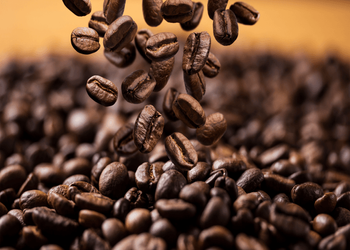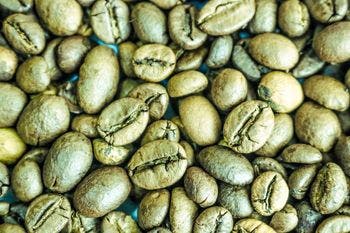
Washed vs Natural Coffee Processing Method

Have you ever thought about how your flavorful beans remain clean and free of impurities?
Yes! It's the washed process that yields you a sediment-free cup.
The processing method you choose impacts your overall cup to a greater extent.
Thus to help you choose the right method.
Today in this article, I will share with you the complete details about the two prominent coffee processing methods: washed and natural.
Plus you will learn how these methods bring unique characteristics and affect the overall flavor and quality of your final cup.
So let’s get started.
What is coffee processing?
It is a series of steps that are carried out to turn your raw cherries into coffee beans.
Here the outermost layer of the coffee cherry is removed to get the final bean.
This process makes the bean ready for roasting and impacts the final cup's flavor profile, aroma, and acidity.
Why is it important?
The processing method you select plays a great role in the taste, aroma, and overall quality of your coffee.
From affecting acidity levels to enhancing your coffee's body and sweetness, the processing method can either improve or reduce the complex flavors within the coffee beans.
Natural and washed processing Method: Overview
Natural coffee processing
What is it?
Natural processing is a process where whole coffee cherries are dried in the sun to remove the outer layers and get the real beans inside.
This technique helps to keep the beans and their fruity pulp in contact for a longer period which as a result gives your coffee the unique fruity and fermented notes.
Process Steps
Step 1: Pick your coffee cherries
Maintain the quality of your brew by using ripe cherries.
Step 2: Remove the pulp
Take out the pulp from the coffee cherries but make sure certain pulp remains there.
Step 3: Let the cherries dry
Keep your coffee cherries under the sun for a few weeks and monitor them carefully.
Step 4: Proceed to milling
After drying remove the remaining fruit and the beans are hulled and polished.
Advantages
1) Unique flavor
Natural processing helps to extract the fruity, floral, and deep wine-like flavors in the coffee beans. From vibrant berry notes to tropical tastes, each cup is a great adventure.
2) Complexity and depth
The extended fermentation process in natural processing infuses the beans with complexity and depth. It helps to bring out the hidden flavors within each cherry in every sip.
3) Minimal intervention
One of the best things about natural processing is its simplicity. By letting the cherries dry naturally in the sun, minimal human effort is required, which results in a coffee that reflects the terroir and climate of its origin.
4) Environmental sustainability
Natural processing needs fewer resources as compared to washed processing which makes it environmentally more sustainable in regions with limited water availability.
5) Versatility
What makes naturally processed coffee a favorable option is its versatility to suit a wide range of brewing methods.
Disadvantages
1) Probability of defects
Due to the longer drying period involved in natural processing, there's an increased risk of defects which can lead to molds, fermentation, and inconsistent drying. Due to this the quality and consistency of the final cup is compromised.
2) Inconsistent results
Natural processing is strongly dependent on weather conditions, humidity levels, and proper cherry selection. As a result, getting consistent results can be a bigger challenge, leading to changes in flavor and quality from one batch to another.
3) Limited control
In contrast to washed processing where the mucilage is removed at the beginning of the process, natural processing relies on the natural fermentation of sugars within the cherry. As a result, there is no control over the fermentation process which leads to undesirable flavors in your coffee.
4) Longer processing time
Natural processing requires a longer processing time as compared to washed processing. Due to this, the farmers take longer intervals to bring their coffee to market. This as a result impacts the cash flow and profitability for coffee producers.
Washed coffee processing
What is it?
Washed processing stresses more on cleanliness and consistent taste. In this method, the cherry's skin and pulp are removed beforehand just after picking. It is also called the wet method.
Process Steps
Step 1: Pick your coffee cherries
Just like natural processing, harvest only ripe cherries.
Step 2: Proceed to pulping
Once you get ripe cherries, use a machine to remove the fruit flesh and let the coffee bean be covered in its parchment layer.
Step 3: Start with fermentation
Add the beans and submerge them in water tanks for a certain period. This will help the natural enzymes break down the mucilage layer (a sticky substance) stuck to the parchment.
Step 4: Wash it out
Wash out the beans well to remove any remaining mucilage and impurities.
Step 5: Keep them aside for drying
Let the washed beans dry. You can even use mechanical dryers to dry them. Continue it until it reaches the desired moisture level.
Step 6: Go for milling
Lastly, remove the parchment layer and silver skin of the beans and get the green coffee beans ready for roasting.
Advantages
1) Consistent flavor
The best part about washed processing is it infuses the beans with a clean, bright, and consistent flavor profile. By removing the cherry's skin and pulp beforehand, with washed processing the risk of off-flavors and defects is reduced. As a result, the final cup you get is balanced and delicious.
2) More clarity and transparency
With washed processing you can get complete control over the fermentation and washing stage. As a result, you get beans that are free from any residual mucilage and other impurities. This clarity and transparency in the cup let the unique characteristics of the coffee's origin shine through. Plus it also represents your terroir and its unique preferences.
3) Versatility
As washed processing has a more clean and consistent flavor profile, it is versatile and can match a wide range of brewing methods. Whether you prefer a classic espresso shot, a silky smooth pour-over, or a refreshing cold brew, washed processed beans result in a satisfying and balanced coffee with every sip.
4) Reduced environmental impact
Natural processing requires longer sun-drying of the cherries while washed processing requires comparatively less water and energy. Due to this washed processing is a more environmentally sustainable option, particularly in regions where water resources are limited or conservation is a priority.
5) Improved quality
With rigorous washing and fermentation, washed coffee processing helps to maintain the quality and consistency from batch to batch. Coffee producers can observe factors such as fermentation time, water temperature, and pH levels and make sure that each coffee batch meets the highest standards of quality and excellence.
Disadvantages
1) Water intensive
Washed processing requires a sufficient amount of water for pulping, washing, and fermentation. Thus in regions where water resources are limited, it can pose environmental and economic challenges for coffee producers.
2) Expensive and more resources required
Natural processing makes use of minimal resources while washed processing requires machinery, water, and skilled labor. The pulping machines, fermentation tanks, and drying equipment add to the overall production cost, which can be a blocker for small-scale farmers in developing regions.
3) Higher water usage
Washing helps to remove the fruit flesh and mucilage using water immersion and extensive rinsing. It is a bigger concern in areas facing water scarcity, raising environmental sustainability questions. Thus responsible water management practices are crucial for washed processing facilities to minimize their environmental footprint.
4) Potential loss of unique flavors
By taking out the fruit flesh in the early steps, washed processing might unintentionally remove some of the subtle fruit notes and complex flavors that the bean has. This can be seen as a disadvantage for some coffee enthusiasts who appreciate the unique character or flavors in natural processing.
Natural vs Washed Coffee Processing: In-depth Comparison
1) Flavor profile
Naturally processed coffees are preferred for their bold and fruity flavor profiles.
Its extended fermentation period further allows the sugars in the cherry to infuse the beans with complex and exotic flavors, irrespective of berries, stone fruits, and wine.
While washed processed coffees have a clean and vibrant flavor profile. If you want a bright acidic cup with some sweetness and clarity then this process is perfect, it removes mucilage through thorough washing.
2) Complexity and depth
Natural processed coffees have complex and deep flavors due to their longer fermentation process. In contrast, the washed processed coffees may lack the fruitiness of natural processed coffees due to their thorough washing that results in pristine clarity of flavor.
3) Processing time and labor
Natural processing typically takes longer processing time as compared to washed processing. Here the cherries are left to dry in the sun for several weeks.
It is labor-intensive and requires frequent turning and monitoring to make sure even drying and prevent defects.
In comparison, washed processing is comparatively faster and less labor-intensive than natural processing, as the cherries are pulped and washed soon after harvesting.
4) Environmental impact
Natural processing is more environmentally friendly than washed processing, as it requires fewer resources such as water and energy.
However, managing cherry husks and wastewater can still have environmental impacts if not managed properly. While washed processing is more water-intensive, it has a greater environmental impact, particularly in regions with limited water resources.
Thus the efforts to mitigate these impacts, such as water recycling and wastewater treatment, increase the complexity and add to the cost of washed processing operations.
5) Market demand and price
Naturally processed coffees are sought in their specialty coffee market, thanks to their unique flavor profiles and exotic appeal. This results in high prices, particularly for coffees of exceptional quality and rarity.
While washed-processed coffees are more appreciated in mainstream markets, for their clean and consistent flavor profiles.
Natural processing or washed: Which is better?
Well! The choice between these two narrows to personal preferences.
If you like the bold and exotic flavors, then go for natural processed coffees. In contrast, if you prefer clean and vibrant profiles, go for washed processed coffee.
Wrapping it up
Here, I have got you covered with washed vs natural coffee processing methods.
Natural processing dries coffee cherries under the sun keeping the fruity flavors intact. It results in bold, and complex flavors. This method doesn't harm Mother Earth much but requires longer processing times and holds a higher risk of defects.
Whereas washed processing removes the fruity flesh before drying, and provides clean, bright, and consistent flavors. While it is more water-intensive, it offers greater control over the final product and is less prone to defects.
If you enjoy unique flavors then go for natural processing. If you prefer clean, predictable profiles, choose washed.
That's all for this blog! I hope you now have a better understanding of natural and washed processing and can choose your coffee processing method based on your taste preferences.

I am a barista by profession hailing from NC. My journey began in my late teens when I started working as a barista in a local coffee shop. My passion for coffee quickly became evident as I immersed myself in the art of espresso extraction, latte art ...



